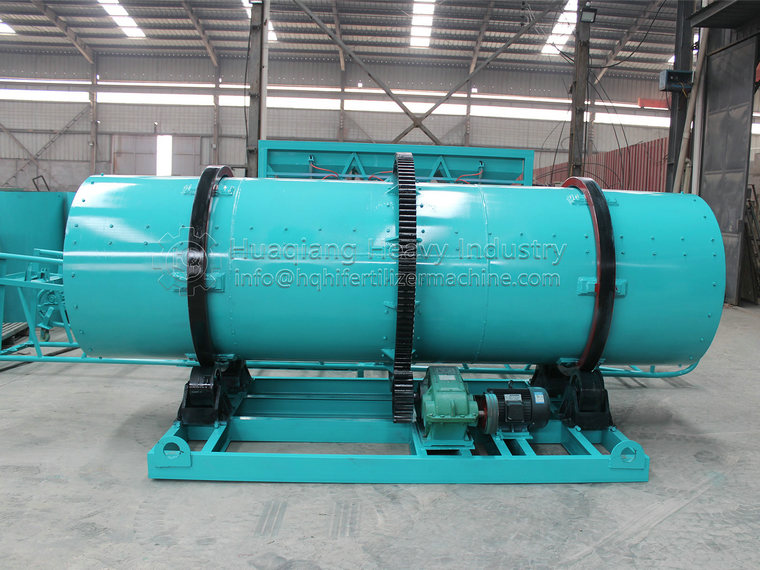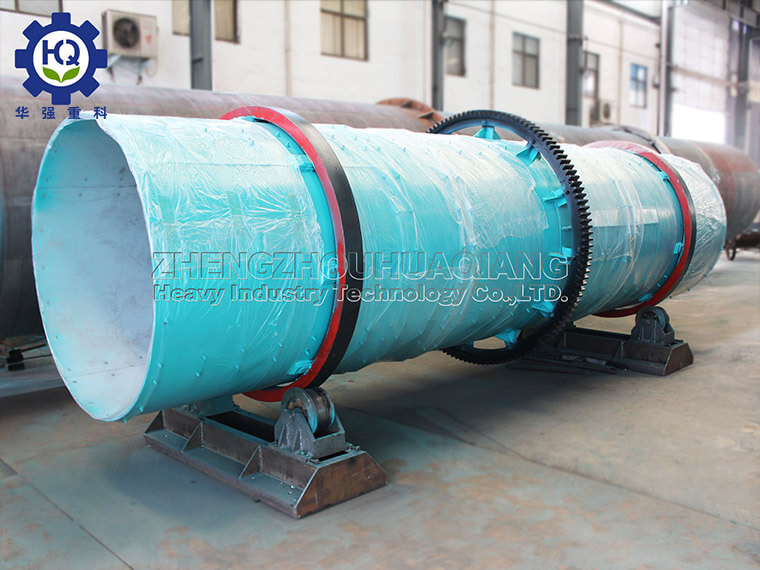Drum granulator is one of the commonly used granulation equipment in organic fertilizer production lines, widely used to convert various organic materials into uniform and solid granular fertilizers. The following is the basic granulation process and characteristics of the rotary drum granulator:
Basic process flow
1. Raw material preparation
Ensure that the raw materials have been pre treated, such as crushing, dehydration, fermentation, etc., for easier shaping.
2. Mixing
Send the processed raw materials into the mixer and add an appropriate amount of adhesive or other auxiliary materials to ensure uniform distribution of ingredients.
3. Enter the rotary drum granulator
Send the mixed raw materials into the rotary drum granulator, at which point the drum begins to rotate.
4. Granulation process
Inside the drum, granulation is carried out through the action of the following forces:
Centrifugal force: generated by the rotation of the drum, it drives the material to move towards the periphery, which is conducive to particle aggregation.
Rolling friction force: When the material rolls along the drum wall, the particles come into contact and rub against each other, gradually condensing and increasing.
Gravity: Helps smaller or unformed particles fall back into the central area and continue to grow.
5. Particle maturity and emissions
After a period of rolling and growth, the particles reach a certain size and strength and are discharged from the outlet.
6. Follow up processing
The discharged particles may require further drying, cooling, and screening to achieve the desired finished product state.
characteristic
Strong adaptability: suitable for various organic materials, such as livestock manure, crop residues, etc.
High granulation efficiency: Due to continuous rolling and self weight, the granulation efficiency is relatively high.
Uniform particles: The particles have a relatively regular shape and consistent size, making them easy to package and fertilize.
Flexible operation: By adjusting parameters such as drum speed and filling rate, it is easy to control particle size and shape.
Economical and practical: The equipment has a simple structure and low maintenance costs.
The rotary drum granulator plays an important role in organic fertilizer production lines. Its efficient and stable granulation capacity enables organic waste to be fully utilized and transformed into valuable fertilizer products, promoting the development of circular economy in agriculture. Through continuous process optimization and technological innovation, the rotary drum granulator will continue to enhance its position and influence in the organic fertilizer industry.
.jpg)
.jpg)


.jpg)
.jpg)

.jpg)
